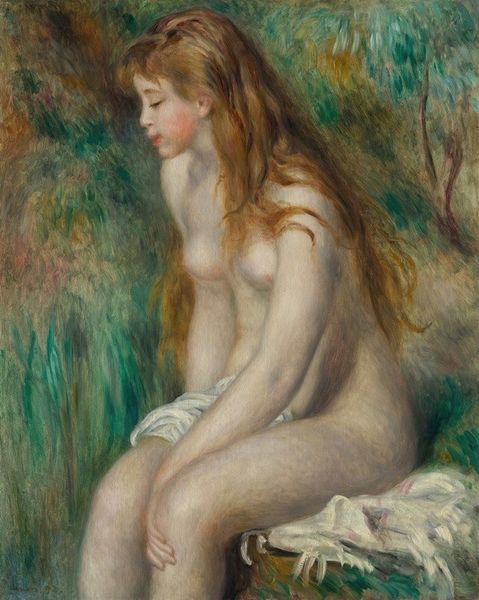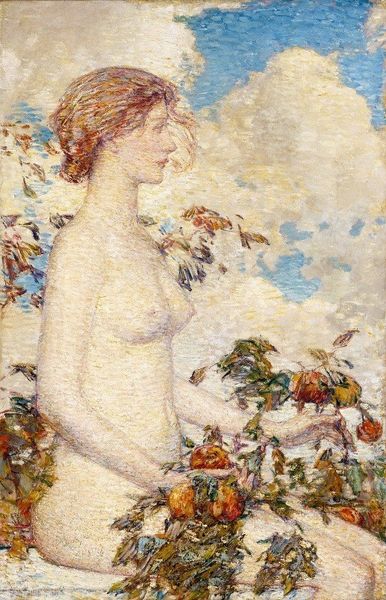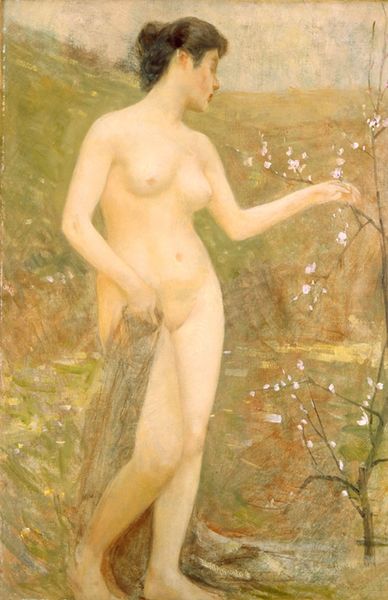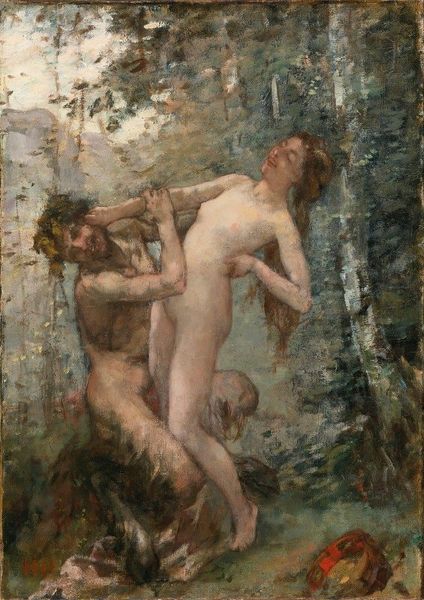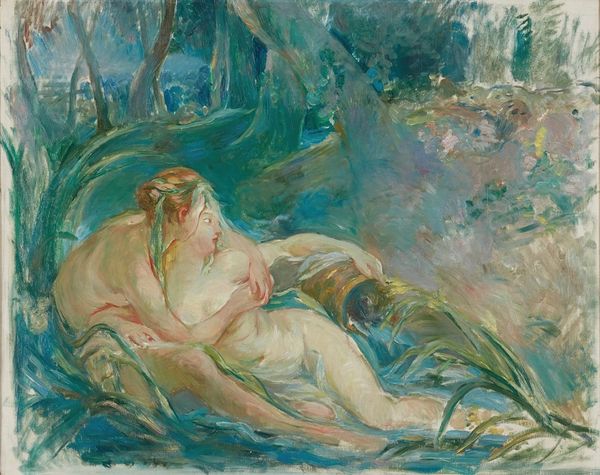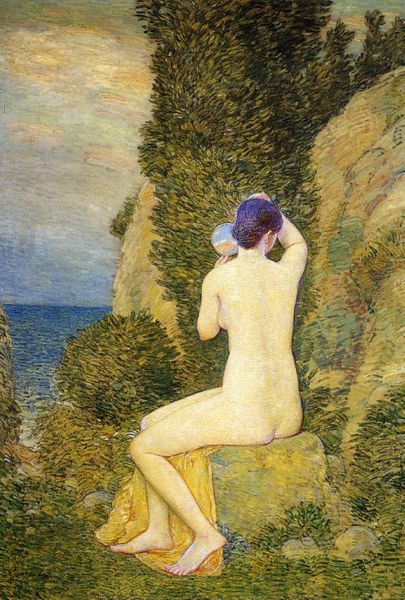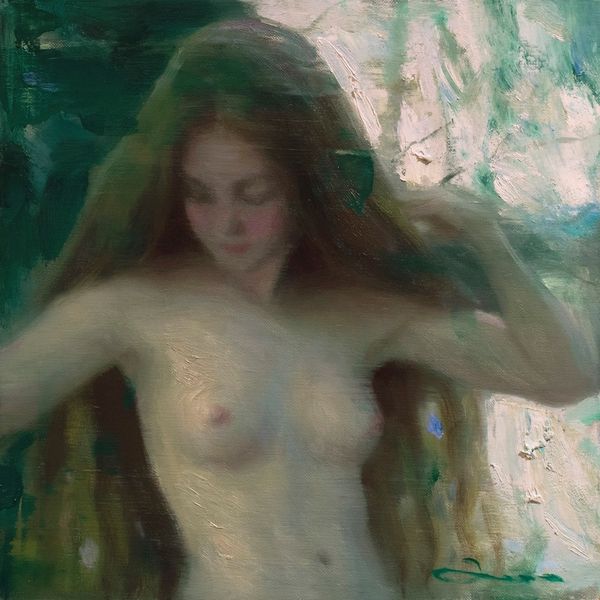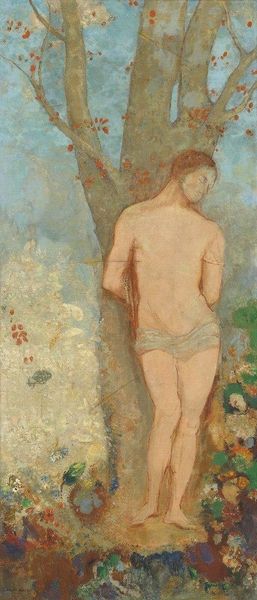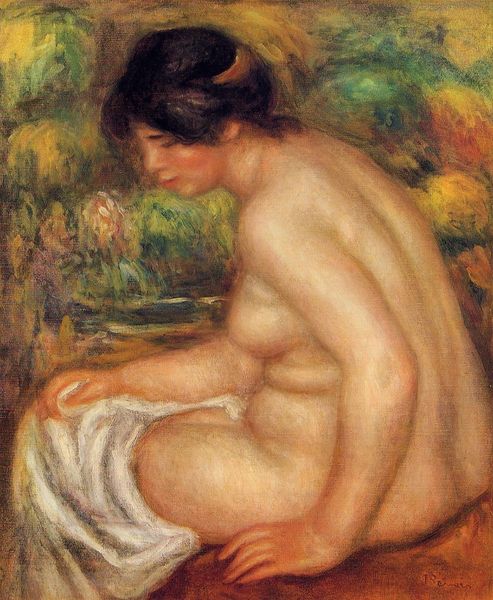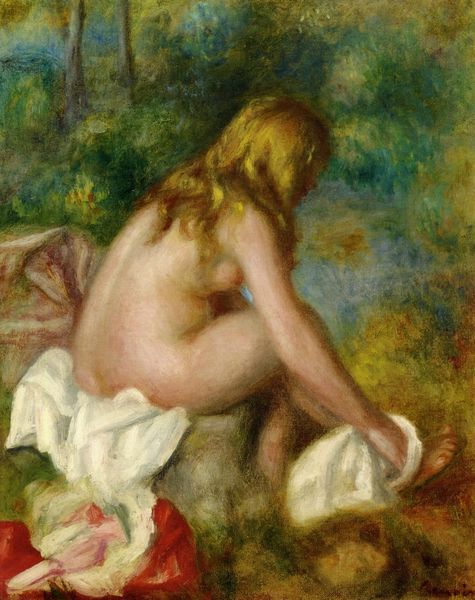
painting, oil-paint
#
painting
#
oil-paint
#
landscape
#
figuration
#
oil painting
#
romanticism
#
mythology
#
history-painting
#
academic-art
#
nude
Copyright: Public Domain: Artvee
Art Historian: Editor: Here we have Waterhouse's "Phyllis," an oil painting. Looking at the piece, the rough brushstrokes give it an unfinished quality. It appears, based on other artworks by Waterhouse, to be inspired by mythology. What can you tell me about the historical or cultural context in which this painting was made? Art Historian: Waterhouse and others of his era focused on classical and mythical subjects, though frequently recast with Pre-Raphaelite sensuality and often a bit of melancholy. This focus wasn’t accidental. These painters directly grappled with the means and implications of their art. Consider, who was commissioning these types of paintings, and what function did these works play in maintaining a certain kind of social order and visual pleasure? Editor: That's an interesting point, the question of social order is pretty critical here. This wasn’t folk art, it needed wealthy patrons. Can you say a bit more about the materiality of the work, I mean, oil paint wasn’t cheap at the time, right? Art Historian: Absolutely. The very materiality speaks volumes. Oil paints themselves, commercially produced by this period, represent industrial advancement and accessibility, yet used to portray classical ideals, creating an interesting tension. We can’t separate the pigments, canvas preparation, and labor involved from the final "artistic vision". The support, whether canvas or panel, plays into that story. Each element reveals choices about material worth, the art market and what society deemed ‘worthy’ of representation. This is even without delving into his choice of model... Editor: Right. What can we know about who she might have been, given the norms of that period? Art Historian: Exactly. Understanding how painting materials and artistic labor intertwined helps reveal a much deeper narrative embedded within its very fabric. These aspects influence artistic choices, styles and even impact the reception of the artwork within a market-driven system. This means questioning every step in its production and journey to display. Hopefully, this deeper inspection of all physical elements and its process will leave an imprint as we leave here today. Editor: This has given me so much to consider about the production of art. Thanks.
Comments
No comments
Be the first to comment and join the conversation on the ultimate creative platform.
